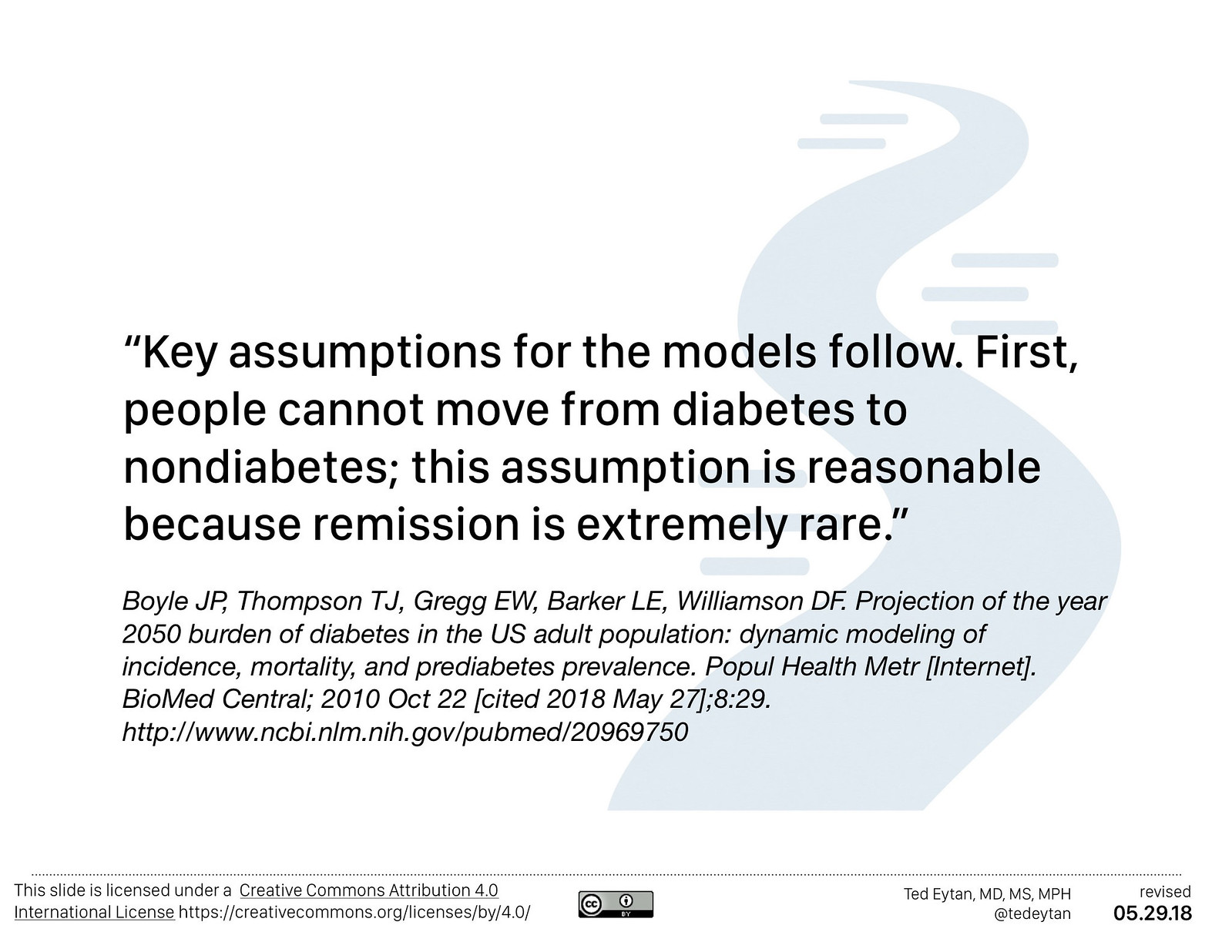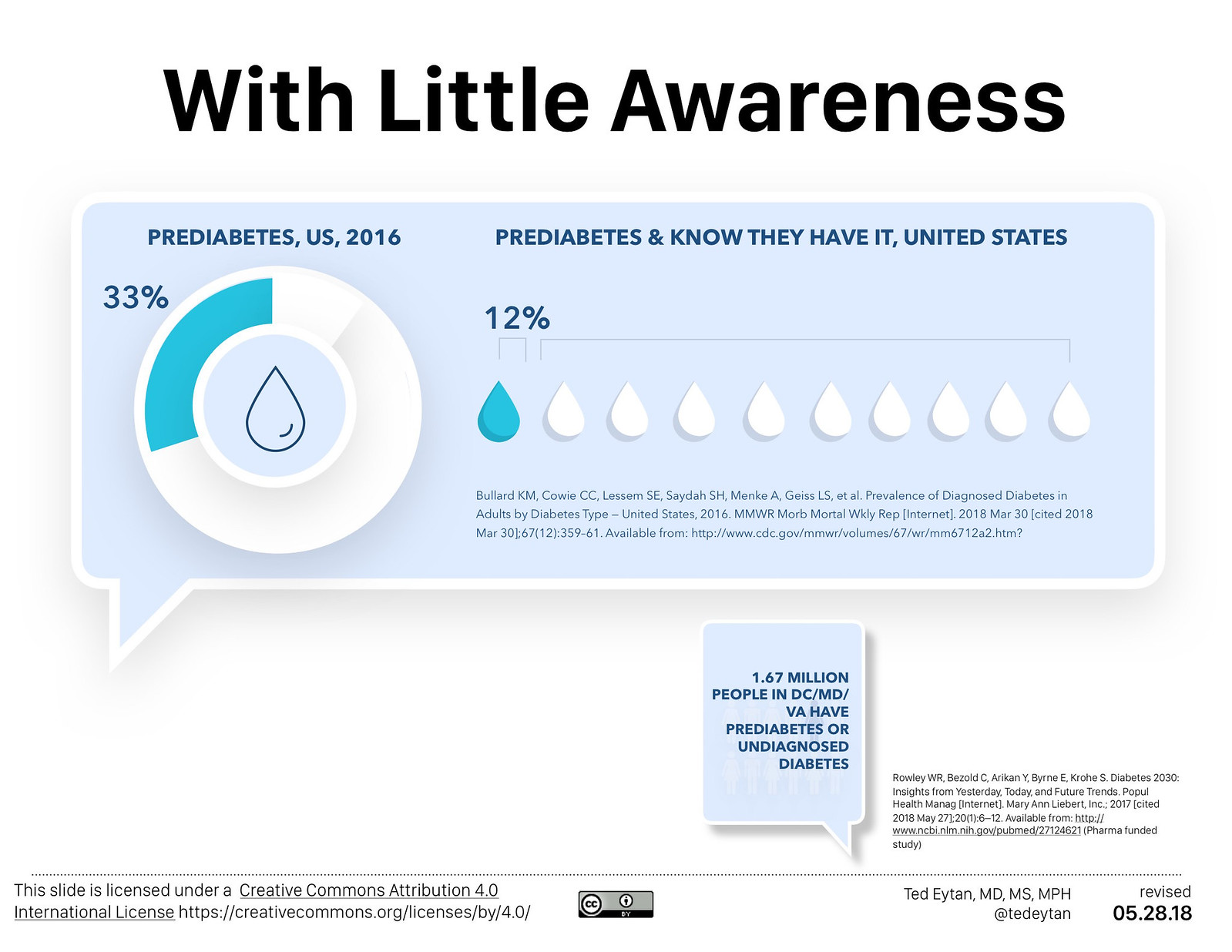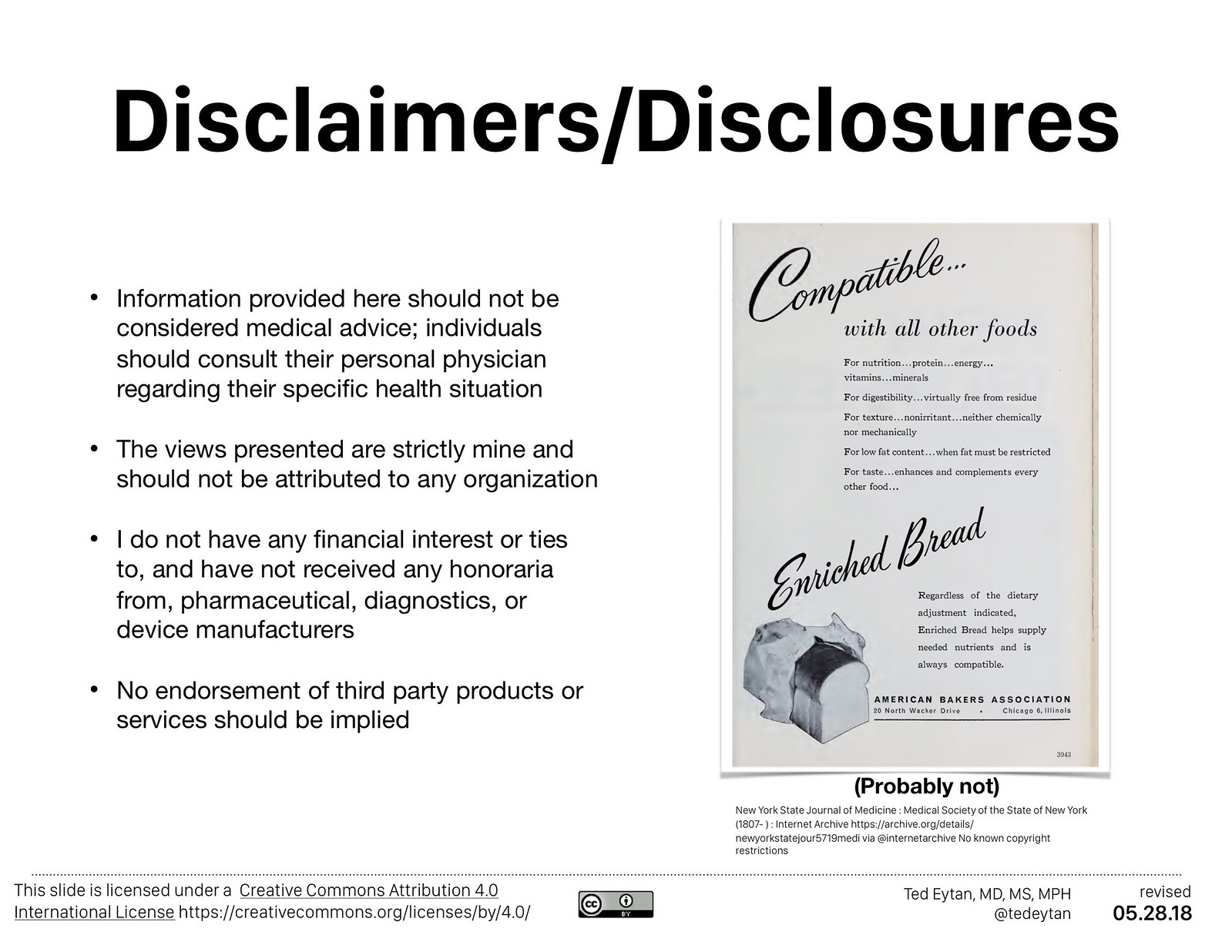
Just finishing a presentation I’m preparing for a local meetup group that I’m hosting, and reviewing projections for Diabetes and metabolic syndrome/insulin resistance/prediabtes.
There are two analyses I’ve referenced + the regular CDC analysis (references below). One is older (2010) and is free of conflicts; a newer one (2017) is pharma funded, so I’m discounting that one some. The numbers are similar.
- In 1990, 2.52% of the total United States population had diabetes
- It’s now 9.4%, 12% of adults
- 25% of adults will have diabetes in the US by 2030
- 33% of adults will have diabetes by 2050
- Insulin resistance is rising, with little awareness
A new generation is growing up not knowing a world where there were no advertisements for diabetes meds. I remember that world…
I thought this statement in the 2010 analysis was curiously 20th Century

While remission is rare in usual care, it does happen, and as I mentioned previously, one of the lead researches of a study examining this topic did not interpret the data this way (see: A Different Take- My Conversation With the Author: Diabetes Remission Data from Kaiser Permanente Shows that Patients are Right to Have Hope)
Here are the numbers on prediabetes

And since I’m giving a presentation on the topic of metabolic health, now is as good a time as any to remind about my disclosures/conflicts. Go ahead and look me up on the dollars for docs database, nothing to see there – conflict-free is the way to be.

The 41% increase in people with high fasting plasma glucose for Washington, DC is probably an underestimation in my opinion, given the massive influx of higher SES people into the city since 1990.
At the same time, we’re working to keep the number from rising every day:
References
- Bullard KM, Cowie CC, Lessem SE, Saydah SH, Menke A, Geiss LS, et al. Prevalence of Diagnosed Diabetes in Adults by Diabetes Type — United States, 2016. MMWR Morb Mortal Wkly Rep [Internet]. 2018 Mar 30 [cited 2018 Mar 30];67(12):359–61. Available from: http://www.cdc.gov/mmwr/volumes/67/wr/mm6712a2.htm?s_cid=mm6712a2_w
- Boyle JP, Thompson TJ, Gregg EW, Barker LE, Williamson DF. Projection of the year 2050 burden of diabetes in the US adult population: dynamic modeling of incidence, mortality, and prediabetes prevalence. Popul Health Metr [Internet]. BioMed Central; 2010 Oct 22 [cited 2018 May 27];8:29. Available from: http://www.ncbi.nlm.nih.gov/pubmed/20969750
- Rowley WR, Bezold C, Arikan Y, Byrne E, Krohe S. Diabetes 2030: Insights from Yesterday, Today, and Future Trends. Popul Health Manag [Internet]. Mary Ann Liebert, Inc.; 2017 [cited 2018 May 27];20(1):6–12. Available from: http://www.ncbi.nlm.nih.gov/pubmed/27124621
- Mokdad AH, Ballestros K, Echko M, Glenn S, Olsen HE, Mullany E, et al. The State of US Health, 1990-2016: Burden of Diseases, Injuries, and Risk Factors Among US States. JAMA [Internet]. 2018;319(14):1444–72. Available from: http://jama.jamanetwork.com/article.aspx?doi=10.1001/jama.2018.0158